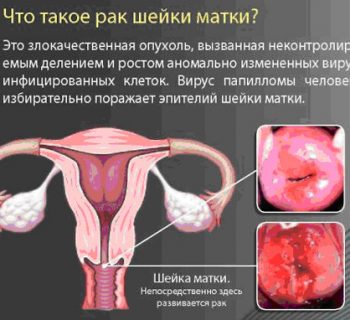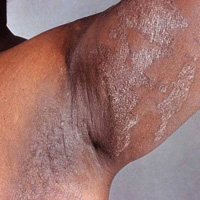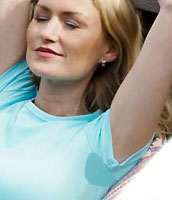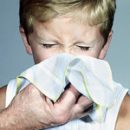Ramibable spots, moles - various types of inborn skin changes at a limited. There are distinguished moles - in the form of bright or dark skin pigmentation, or in the form of wart or stem elevations, and vascular, so-called angioma.
Content
The concept of moles
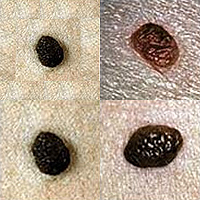 Mountain, Naevus Maternus - Congenital damage to the development of the skin, in which its individual areas differ in color and / or a special wart-type surface.
Mountain, Naevus Maternus - Congenital damage to the development of the skin, in which its individual areas differ in color and / or a special wart-type surface.
Moles have no definite localization. They are found at birth, in the early years of the child's life or later.
Vascular moles (hemangioma) characterized by various magnitudes, uneven edges, pink or blue-red, pale when pressing; They are flat, surface (capillary moles) or knotted, embedded skin, with a buggy, cavernous surface (cavernous moles).
Bearded Moles manifest themselves with single or multiple plaques of diverse shape of dirty gray or brown with an uneven burner surface.
Pigmented moles - From light brown to almost black color - there are the size of a pin head to those engaged in significant sections of the plaques. The surface of them can be uneven, covered with hair (pigment-hairy moles).
Name «Roda spots» not exactly exactly, since a significant part of them are acquired. Almost every person has a number of moles that usually appear in childhood and youth.
What are the moles
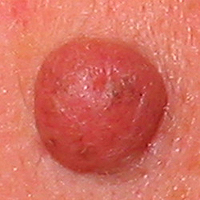 Moles - Lentgo (Border) - This is a flat evenly pigmented spot from brown-brown to black, sampled as a result of an increase in the number of melanocytes on the epidermis and dermis boundary (skin layers). Compared to the freckles of Lentigo darker and are classified less frequently; In addition, their painting does not increase and the number does not increase under the action of solar radiation.
Moles - Lentgo (Border) - This is a flat evenly pigmented spot from brown-brown to black, sampled as a result of an increase in the number of melanocytes on the epidermis and dermis boundary (skin layers). Compared to the freckles of Lentigo darker and are classified less frequently; In addition, their painting does not increase and the number does not increase under the action of solar radiation.
Moles - Epidermo Dermal Nets - Usually flat, but sometimes somewhat towers above the skin level. Color varies light brown to almost black, sizes - from 1 to 10 mm in diameter. Arise as a result of accumulation of melanocytes on the border between the epidermis and the derma. Roda stains on palms, soles and in the genital area are usually epidermo-dermal.
Moles - Sophisticated nevys - more often have dark color and in one degree or another rise above the skin level. The accumulations of melanocytes are localized (located) both on the border between the epidermis and the derma and in the dermis.
Moles - Intradermal nevys rise above the skin level; Their color varies from bodily to black, and the surface can be smooth, covered with hair or warthog.
Moles - Netton Nettones - These are pigment margins (usually complex and intradermal nevys) surrounded by a ring of depigmented (unpainted) skin. Satton Nettons disappear spontaneously, and only in rare cases give rise to malignant melanomas.
Moles - Displanic nevys - These are pigmented irregular flax stains and with fuzzy borders, slightly rise above the skin level, painting them varies from reddish brown to dark drone on a pink background. Displanic nevys first attracted attention to their unusual views and increased frequency in some families (transferred by inheritance). As a rule, they are larger than ordinary birthplace spots, reaching 5-12 mm in diameter; Localization is also different: dysplastic nevys, although they can occur anywhere, are more common in areas, usually closed clothes (on the buttocks, chest), or on the scalp.
Most people have an average of 10 ordinary moles, while dysplastic units may be more than 100. Ordinary nurses usually appear during maturity, dysplastic continue to occur even after 35 years.
Moles - Blue Neva - towering over skin, sometimes hemispherical education, dense, usually with a smooth surface, blue, blue, occasionally brown, with a clear boundary, a value from 0.5 to 2.0 cm, without hair cover. Preferred localization are face, limbs, buttocks.
Mole - Cell blue neust - biologically more active and differs from a simple blue nevus pronounced melanocyte proliferation. Last sign increases the risk of developing melanoma.
Mole - Giant pigmented Nestus - is most often congenital and increases as the child grows. These nevuses have a flat papillary surface and can occupy significant skin area torso, limbs, faces. Predow color - brown, grayish, black.
Causes of rebirth of moles and oncology
To provoke a mole to rebirth, of course, you need to push, irritant.
The strongest of all possible - excessive stay in the sun.
Ultraviolet irradiation in large doses causes irreversible changes in skin cells, many times increasing the risk of rebirth. For each person a critical amount of insolation is purely individually. Determine this face is not easy, so it's better to just remember that a long stay in the sun goes to harm the body. The skin is forced to protect against ultraviolet radiation. Excessive tan is inevitable burns that «Bat» on skin immunity. And she, having an unusual, only characteristic of her «memory», does not forgive unbearable solar shots. As a result, the misstatement of moles and pigment spots, the emergence of all sorts of tumors.
Especially careful should be future mothers
Hormonal perestroika in their body - and it necessarily occurs during pregnancy - sometimes entails major changes in skin cells.
Trauma Moles
Common cause of tumor development - injury. If you thorough her nail, the lacquer was damaged by a washcloth, somehow a sharp subject, be sure to see a doctor. And not therapist, but oncologist!
Risk group
Mute people are most susceptible to solar rays:
- Flook and blonde people with blue, green and gray eyes
- If a lot of freckles,
- If a lot of pigment spots,
- Pregnant,
- If there are many moles, especially if the diameter exceeds 5 mm.
Strange Mountain - Fast to the doctor
Special attention is required: moles in size more than 0.5 cm, as well as strongly pigmented and sharply separated from the surface of the skin (having a kind of accented edge). «Lacquer» The surface of the mole or pigment stain, as well as any sudden transformation, whether it concerns the shape, colors, size, is also a serious reason for accessing specialists.
An even greater anxiety should cause symptoms characteristic of the rebirth of moles and pigment spots. In this case, it is not about prevention, but about the need «grasp» Grozny alert at the stage when it can still be overcome.
Signs of rebirth of moles
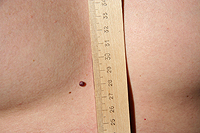 All these signs require an urgent consultation with an oncologist:
All these signs require an urgent consultation with an oncologist:
- Color Changing (Reduction or Sharp Pigmentation Enhancement - Up to Black, Uneven Color, along the periphery of the pigment stain occurs a ring from coal-black merging nodules of unequal sizes that form «black rosary»).
- Uneven coloring of the mole or pigment spots.
- Violation or complete absence of skin pattern in the field of mole or pigment spots, peeling.
- The emergence of the inflammatory range around the mole (redness in the form of a whisk).
- Changing the periphery configuration, erosion of the loaf of the mole or pigment stain.
- Increasing the size of the municipality or pigment stain (the pigment spot is broken, as if «Slores») and its seal.
- Appearance at the base of the mole or pigment spots of nodular small papillomatous elements with elements of necrosis.
- Itching, burning, tingling and tension in the field of mole.
- Hair loss from the surface of the mole or pigment spots.
- The appearance of cracks, ulceration and stress in the field of mole.
What to do with a mole
Since the birthmarks are found very often, and melanomas are rarely developed, the preventive removal of moles is unnecessarily. However, if Molenia suddenly increases in size (especially in the presence of uneven edges), it darkens, it becomes published, it becomes spotted, starts to bleed, ulcerate, zudit or hurts, then it is necessary to remove it. Finding possible signs of the rebirth of the mole - Be sure to consult a doctor-oncologist.
Prevention of melanoma
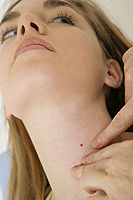 Whatever it sounds like a trite, you need to preserve yourself. After swimming in an open reservoir, be sure to take a shower and swear with a towel. Remember: water droplets, sea salt crystals act on a sunny day as lenses, which repeatedly enhance the harmful effects of insolation (exposure to sun rays). Do not sunbathe from 10 to 15 hours. This is the most dangerous time. Midday sun need to avoid. Even a beach suit or awning does not save from his destructive rays. At this time, dry sand reflects up to 17% of ultraviolet rays, clouds and fog passes them up to 50%, wet clothes after bathing - from 20% to 40%. In men, Melanoma strikes the thigh in 4.9% of cases, the shin is 6.7%; Women have a thigh - at 6.7%, the shin - at 26.3%. Think about these numbers, cute ladies. After all, many of you, staying dressed, being in the shade, do not consider dangerous to substitute the suns. If you do not wear synthetic tights in the heat, which delay 20% direct sunlight, get light cotton trousers that transmit no more than 28% ultraviolet.
Whatever it sounds like a trite, you need to preserve yourself. After swimming in an open reservoir, be sure to take a shower and swear with a towel. Remember: water droplets, sea salt crystals act on a sunny day as lenses, which repeatedly enhance the harmful effects of insolation (exposure to sun rays). Do not sunbathe from 10 to 15 hours. This is the most dangerous time. Midday sun need to avoid. Even a beach suit or awning does not save from his destructive rays. At this time, dry sand reflects up to 17% of ultraviolet rays, clouds and fog passes them up to 50%, wet clothes after bathing - from 20% to 40%. In men, Melanoma strikes the thigh in 4.9% of cases, the shin is 6.7%; Women have a thigh - at 6.7%, the shin - at 26.3%. Think about these numbers, cute ladies. After all, many of you, staying dressed, being in the shade, do not consider dangerous to substitute the suns. If you do not wear synthetic tights in the heat, which delay 20% direct sunlight, get light cotton trousers that transmit no more than 28% ultraviolet.
With any even minor suspicions, do not be lazy to visit an oncologist. In such situations, absentia consultations are unacceptable!
be healthy!



